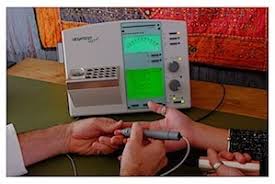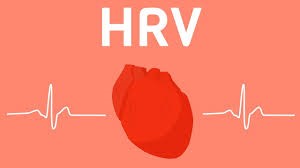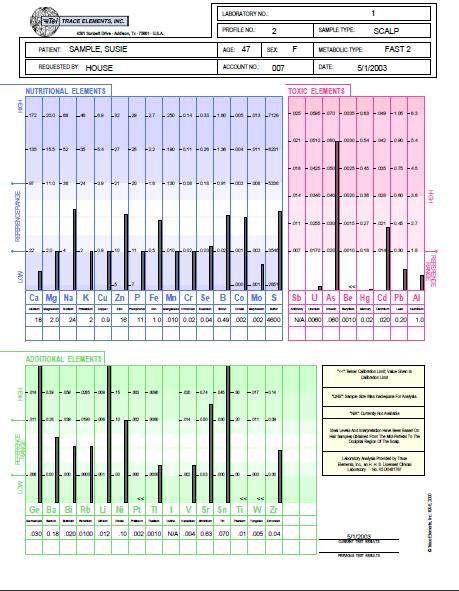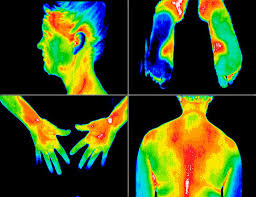These articles are related to the health dangers present in our food chain from various sources Is Soya Good for Health? Health Dangers of Genetically Engineered Foods Milk: A Recipe for Disease? Dangers of MSG Is it OK for my Baby to Take Infant Soya Formula? Is Sugar a Food or a Poison? Why Sugar is Toxic to the Body? Check our supplements for detoxing
How Can I Detox my Body It is common for us to spring clean our homes, apparently in spring, but when did you last spring clean your body? Imagine what your home would look like if you tried Hoovering every day but never emptied or changed the Hoover bag……I think you get the picture. Just as dust and grime builds up in our homes if it is not cleaned properly, toxins build up in our bodies if we do not clear out our system. Our internal ‘Hoover bag’ (the liver) needs a clear out every now and then, in order to keep it doing it’s job properly. Our body is detoxifying every minute of the day – in fact it uses 80% of the energy that it produces for detoxifying. This is why we need to keep the body’s detoxification channels (liver, kidneys, skin, bowels) constantly open and working optimally. There are many factors that influence detoxification activity, but probably the most important are diet and lifestyle. The liver is perhaps the largest and most important detoxification organ therefore is most beneficial to our body’s detoxification process if working optimally. But how do you know if your liver under-functioning? There are a number of symptoms that indicate that the liver is under strain. Use the checklist below to help determine your liver’s condition. Each symptom scores one point – the higher the score, the more important this Liver Detox is for you: LIVER HEALTH CHECKLIST Brain fag Pale coloured stools …
Bioresonance Diagnostics One system, which is beginning to grow in popularity among doctors and dentists, is a device known as the VEGA EXPERT bioresonance measuring device. The VEGA is a resonance bio-regulatory technique known as Vegetative Reflex test that was developed in Germany by Dr. Helmut Schimmel. Its origin comes from Electro-acupuncture according to Dr. Voll (EAV). It is a diagnose system to measure the electrical power of the acupuncture points. The VEGA comes with a hand-held electrical probe which the physician presses against the individual acupoint of interest. The patient holds a brass tube in one hand, which is connected by a wire to the VEGA Machine. By holding this tube, the patient permits a completed electrical circuit to occur when the metal-tipped probe touches the acupoint. The probe relays micro voltage electrical information from the acupoints to the VEGA Machine, where it is displayed on a type of voltmeter readout. Certain levels of electrical norms for the acupoints have been established by Voll's previous research. The electrical voltage level for a particular acupoint reflects the energy level of its meridian associated organ(s). The direction of electrical deviation from the norm can have important implications about the nature of the underlying problem in a particular meridian. For instance, an acupoint voltage that is lower than normal may be caused by degenerative disease within an organ system or by conditions which produce a low general vitality. Conversely, higher than normal acupoint voltage readings can be indicative of an underlying inflammatory …
Heart Rate Variability Testing Heart Rate Variability Testing: Harnessing the Benefits for Health Management Introduction Heart rate variability (HRV) testing is a non-invasive method that assesses the variations in time intervals between consecutive heartbeats. By measuring these fluctuations, HRV testing provides valuable insights into the autonomic nervous system's activity, overall cardiovascular health, and stress response. In this article, we explore the benefits of HRV testing for individuals with health problems and discuss the conclusions that can be drawn from this test. Understanding Heart Rate Variability Testing Heart rate variability refers to the variation in the time intervals between successive heartbeats. The autonomic nervous system, comprised of the sympathetic and parasympathetic branches, regulates heart rate and responds to stressors. HRV testing measures these fluctuations, typically using electrocardiogram (ECG) data, to evaluate the balance and flexibility of the autonomic nervous system. Benefits of HRV Testing for People with Health Problems Stress Assessment and Management: HRV testing is particularly valuable in assessing an individual's stress response. It provides insights into the balance between sympathetic (fight-or-flight) and parasympathetic (rest-and-digest) activity. By monitoring HRV patterns, individuals can gain a better understanding of their stress levels and implement effective stress management techniques to support overall well-being. Cardiovascular Health Evaluation: HRV testing offers an indirect evaluation of cardiovascular health. Reduced HRV is associated with an increased risk of cardiovascular diseases such as hypertension, heart disease, and arrhythmias. By assessing HRV, individuals can identify potential imbalances and take proactive steps to improve heart health through lifestyle modifications, exercise, …
TOXIC METAL TESTING Hair Mineral Analysis: Unveiling Nutritional Deficiencies and Heavy Metal Toxicity Introduction Hair mineral analysis is an increasingly popular diagnostic tool used to assess nutritional deficiencies and heavy metal toxicity within the body. This non-invasive technique analyzes the mineral content and trace elements present in the hair, providing valuable insights into an individual's overall health status. In this article, we explore the applications of hair mineral analysis, its advantages over other tests, and its significance in detecting nutritional deficiencies and heavy metal toxicity. Understanding Hair Mineral Analysis: Hair mineral analysis involves collecting a small sample of hair and analyzing its mineral composition, including essential minerals (such as calcium, magnesium, zinc, and iron) and potentially toxic heavy metals (such as lead, mercury, cadmium, and arsenic). The concentrations of these elements reflect the body's mineral status and potential exposure to environmental toxins. Detecting Nutritional Deficiencies: Comprehensive Nutrient Assessment: Hair mineral analysis provides a comprehensive assessment of mineral imbalances and deficiencies. By evaluating the levels and ratios of essential minerals, it can indicate potential nutrient deficiencies that may contribute to various health issues. This information guides targeted dietary and supplementation recommendations to restore optimal nutrient balance. Long-Term Nutrient Status: Hair mineral analysis reflects the body's mineral status over an extended period, offering insights into long-term nutrient deficiencies. Blood tests, on the other hand, provide a snapshot of the body's mineral levels at the time of testing and may not fully capture long-term imbalances. Mineral Interactions: Hair mineral analysis reveals interactions between …
THERMOGRAPHY Thermography: An Innovative Diagnostic Tool for Breast Cancer and Beyond Introduction Thermography, also known as thermal imaging, is an advanced diagnostic technique that utilizes infrared technology to detect and visualize temperature patterns and variations on the surface of the body. This non-invasive and radiation-free imaging method has gained recognition for its potential diagnostic benefits, particularly in the detection and monitoring of breast cancer. Understanding Thermography Thermography involves the use of specialized infrared cameras to capture thermal images of the body's surface temperature distribution. These images display variations in heat patterns, highlighting areas of increased or decreased temperature. The underlying principle of thermography is that abnormal tissue activity, inflammation, and blood flow patterns can influence surface temperature, making it a valuable tool for detecting subtle changes that may be indicative of various health conditions. Diagnostic Benefits for Breast Cancer: Early Detection: Thermography has the potential to detect early physiological changes associated with breast cancer. These changes, such as increased blood flow and abnormal temperature patterns, may occur before the development of detectable masses or structural abnormalities visible through other imaging modalities. Early detection increases the chances of successful treatment and improved outcomes. Sensitivity and Specificity: Thermography demonstrates high sensitivity in detecting breast abnormalities. It can identify temperature asymmetry and subtle thermal patterns that may indicate abnormal tissue activity. Additionally, thermography has been shown to have a high negative predictive value, meaning that a normal thermogram can provide reassurance and reduce unnecessary further investigations. Non-Invasive and Radiation-Free: Unlike mammography and other …
Live Blood Analysis Decoding Live Blood Analysis: Unveiling Health Insights for Improved Well-being Introduction Live blood analysis (LBA), also known as dark-field microscopy, is an innovative diagnostic technique that provides real-time observation of live blood cells. By examining a single drop of blood under a specialized microscope, LBA offers unique insights into the health and vitality of an individual. Understanding Live Blood Analysis Live blood analysis involves the examination of a small, freshly collected blood sample under a dark-field microscope. Unlike traditional blood tests that analyze fixed and stained blood samples, LBA provides a dynamic and immediate view of live blood cells. This technique allows for the observation of red blood cells, white blood cells, platelets, and plasma components in their natural state. Interpreting Live Blood Analysis Live blood analysis provides valuable information about the overall health status and potential imbalances within an individual's body. A trained practitioner analyzes various aspects of the live blood sample to draw conclusions and guide recommendations for improving health. Here are some key elements observed during LBA: Red Blood Cell Integrity: The shape, size, and movement of red blood cells are observed during LBA. Healthy red blood cells are round, evenly shaped, and exhibit optimal movement. Distorted shapes, clumping, or sluggish movement may indicate nutrient deficiencies, oxidative stress, inflammation, or other health issues. White Blood Cell Activity: White blood cells play a critical role in the immune response. LBA allows for the evaluation of white blood cell activity, such as their mobility, quantity, and …
Autonomic Response Testing (ART) WHAT IS AUTONOMIC RESPONSE TESTING (ART)? Autonomic Response Testing (ART) has taken the art and science of muscle testing to an entirely different level. For the clinicians who find themselves working with more difficult and confusing cases, ART offers a fairly quick and accurate method of finding the underlying causative factors. Autonomic Response Testing (ART) grew out of the importance of detecting and correct problems of the autonomic nervous system. ART allows the doctor to correct the problems of the ANS and to help restore the self regulating mechanism of the body allowing the patient to return to a state of health. Autonomic Response Testing (ART) is a system of evaluation and treatment developed by Dietrich Klinghardt, MD, Ph.D and Lousia Williams, DC, ND. Dr. Klinghardt is a German trained physician who also has a Ph.D in neurology. ART uses Applied Kinesiology, Electroacupuncture (EAV), O-Ring testing, Nogier pulse, Chinese pulse, heart rate variability and other techniques to assess the health or dysfunction of the autonomic nervous system. Dr. Klinghardt believes that many practitioners using kinesiology or muscle testing in their practice are often getting inaccurate information because the autonomic nervous system is not functioning properly. In ART, this condition is called 'blocked regulation' and refers to the inability of the ANS to self-regulate and is caused by 7 common factors. These include: undiagnosed food allergies, heavy metal toxicity, petroleum chemical toxicity, chronic unresolved infections and scars, temporomandibular joint dysfunction (TMJ), unresolved psychological stress, and electromagnetic stress. …
IRIDOLOGY The science of Irisanalysis or Iridology is an accurate and quick way of eliciting health informaiton from the iris of the eye, the coloured portion. It is used by many health practitioners, including medical doctors in many countries throughout the world. HISTORY The medical doctor named Ignatz von Peczely (1826-1907) from Egernar, near Budapest, Hungary has proved the basis of the method and proposed his own iris zones projection chart although rather primitive from modern point of view but relatively reliable. The scientist's biographers give rather interesting legend determined the mission of the future founder of modern iridology. While studying in the Viennese University and working in the surgery hospital, Peczely started to investigate the patient's iris changes depending on different diseases. He has found that each part of the body as well as each organ correspond to the determined iris segment. As a result the first iris chart was developed making him a founder of modern iridology. In 1880 Peczely published a book describing principles of diagnostics using iris. The main attention of his work was the location and form of iridological signs. Later he has published a manual on iris diagnostics where he wrote as epigraph that eyes are not only mirroring of the soul but of the body as well. This work was met by icy silence of contemporaries. Another important page to iridology history was added by Swedish pastor N. Liljequist. 'A man can lie but his eyes never lie' was his answer to those who were interested …












